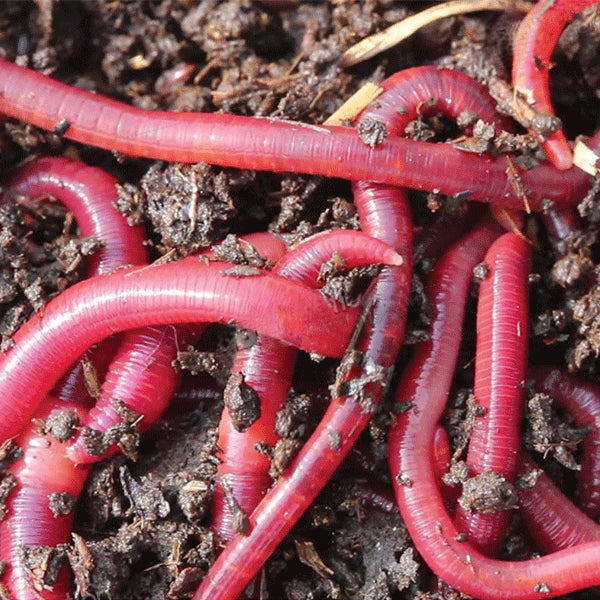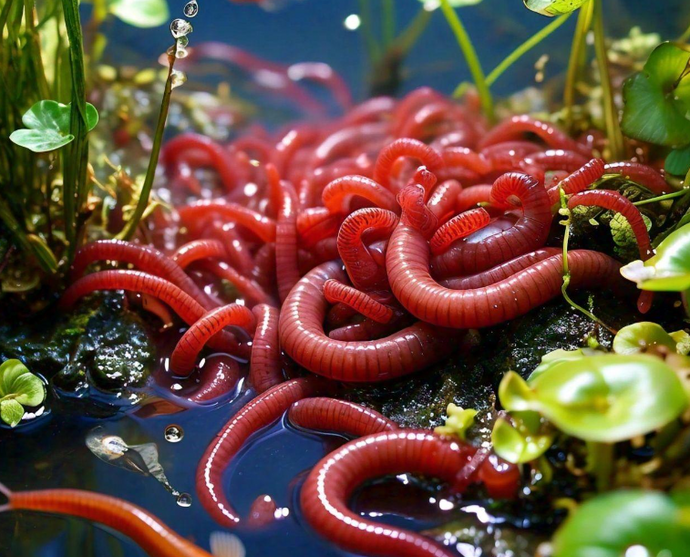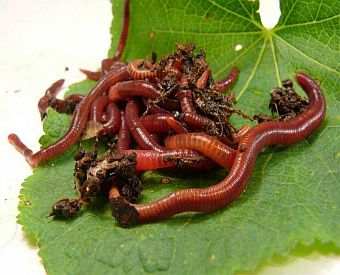Composting-friendly red wigglers: What you need to know
Composting-friendly red wigglers: What you need to know
Blog Article
The Function of Red Wigglers in Sustainable Horticulture
The combination of red wigglers into lasting gardening methods offers a compelling strategy to improving dirt health and wellness and decreasing organic waste. The ramifications of utilizing red wigglers prolong beyond plain composting; their role in shaping a much more sustainable future warrants a much deeper expedition of their benefits and sensible applications.
Recognizing Red Wigglers
Red wigglers, medically understood as Eisenia fetida, are a species of earthworm renowned for their duty in sustainable gardening and composting techniques - red wigglers. These worms grow in decaying raw material, making them specifically effective in transforming cooking area scraps and yard waste into nutrient-rich compost. Unlike traditional earthworms, red wigglers have a greater tolerance for differing moisture degrees and can flourish in environments with abundant organic material
(red wigglers)Characteristically, red wigglers are smaller than their earthworm counterparts, typically measuring in between 3 to 4 inches in length. They possess a reddish-brown coloration and have a fractional body structure that assists in their burrowing and feeding activities. These organisms are hermaphroditic, meaning each specific possesses both male and women reproductive body organs, which enables effective populace growth under optimal conditions.
The habitat preferences of red wigglers consist of moist, dark settings abundant in natural material, such as garden compost containers or worm farms. Their ecological duty extends past composting; they are integral in freshening the soil and assisting in nutrition cycling, which eventually adds to much healthier yard ecological communities. red wigglers. Comprehending the biology and actions of red wigglers is crucial for those looking for to execute reliable vermicomposting in sustainable gardening
Benefits of Vermicomposting
Vermicomposting deals countless benefits that improve lasting horticulture practices and contribute to ecological health and wellness. Among the key advantages is the makeover of natural waste into nutrient-rich compost, which enhances soil structure and fertility. The spreadings created by red wigglers are packed with useful bacteria and crucial nutrients, making them an excellent all-natural plant food.
Furthermore, vermicomposting dramatically minimizes land fill waste. By drawing away kitchen area scraps and lawn waste from landfills, this method not only decreases methane exhausts-- a potent greenhouse gas-- but likewise advertises a circular economic climate, where waste is repurposed as a resource.
An additional benefit is the enhancement of dirt oygenation and drainage (red wigglers). The burrowing activity of red wigglers creates channels in the soil, enabling air and water to penetrate even more conveniently, hence fostering a much healthier origin system for plants
Furthermore, vermicomposting can be done on a little scale, making it obtainable for metropolitan garden enthusiasts and those with minimal room. This technique motivates environmental stewardship and recognition, as people become extra engaged with their waste administration techniques. Eventually, vermicomposting stands for a lasting, efficient, and eco-friendly strategy to horticulture that profits both plants and the planet.
How to Start Vermicomposting
Starting your own vermicomposting system can be a satisfying undertaking that improves your sustainable horticulture methods. To begin, choose an ideal container, such as a plastic bin or wood box, with great drainage and air flow. The size will certainly depend upon the quantity of kitchen scraps you produce; a bin of 10-14 gallons generally is sufficient for a home.
Following, prepare the bed linens material. Shredded newspaper, cardboard, and coconut coir are outstanding options, giving a comfortable habitat for the red wigglers. Go for a bed linens depth of about 4-6 inches, which need to be damp however not soggy.
Once the bedding is developed, introduce your worms. Red wigglers (Eisenia fetida) are the most appropriate for composting. Beginning with roughly one extra pound of worms for every 2-3 pounds of kitchen area scraps weekly.
Begin adding cooking area waste, preventing meat, milk, and oily foods, as these can bring in parasites and produce odors. Frequently monitor the bin's wetness degrees and temperature, ensuring it continues to be within the perfect variety for worm activity. With these preliminary steps, you'll be well on your means to producing nutrient-rich garden compost for your yard.
Preserving a Healthy Worm Container
A growing worm bin calls for consistent care and interest to maintain an optimal environment for the red wigglers. Key variables to keep an eye on consist of wetness degrees, temperature level, and food supply. Maintaining a dampness degree similar to a wrung-out sponge is critical; excessive water can result in anaerobic problems, while inadequate can dry out the worms.
Temperature is also crucial, as red wigglers thrive in a range of 55 to 77 degrees Fahrenheit. Severe temperatures can emphasize the worms, possibly leading to mortality. As a result, positioning the bin in a climate-controlled area or utilizing insulating products can assist manage temperature changes.

Lastly, oygenation is important. Routinely transforming the bedding and making use of a fork or shovel can protect against compaction and promote air flow, guaranteeing a healthy and balanced, thriving atmosphere for the red wigglers. By adhering to these methods, gardeners can preserve find this an effective worm bin that supports sustainable gardening efforts.
Effect On Dirt Health And Wellness
Enhancing soil wellness via the usage of red wigglers is a basic element of sustainable gardening. By taking in organic issue, red wigglers damage down complex materials right into easier compounds, a procedure recognized as vermicomposting.

(red wiggler worms near me)Researches have actually shown that dirts enhanced with worm spreadings exhibit enhanced microbial activity and enhanced fertility, resulting in higher plant returns. By incorporating red wigglers right into gardening methods, gardeners not only enhance their soil but likewise add to a more sustainable farming system, emphasizing the interconnectedness of dirt health and environmental stewardship.

Final Thought
To conclude, red wigglers significantly add to lasting gardening through their reliable vermicomposting techniques. Their capability to transform natural waste into nutrient-rich compost boosts soil fertility and supports a varied microbial ecological community. Their burrowing task boosts dirt aeration and water retention, benefiting plant health. By advertising waste reduction and fostering a round economy, red wigglers become vital parts in environmentally friendly horticulture efforts, highlighting their vital duty in ecological sustainability.
Report this page